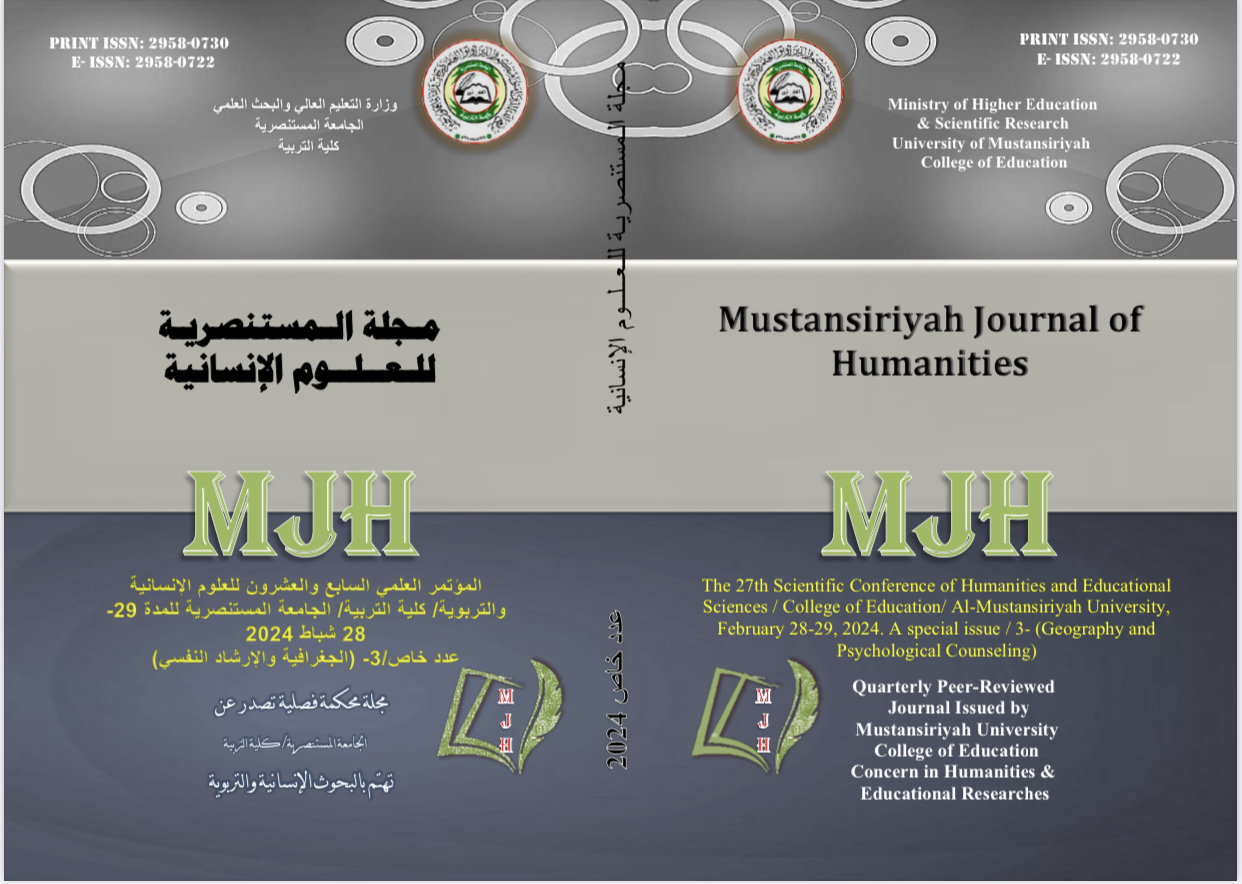تحليل جغرافي لمدى الرؤيه المنخفض لمحطات مختاره في العراق
DOI:
https://doi.org/10.47831/mjh.v3iخاص.503Abstract
The frequency of low visibility range, in which visibility ranges from (0 - 4) km, varies between the study stations during the period (2009 - 2021) spatially and temporally, and the highest frequency of low visibility range recorded at Baghdad station in December amounted to 13.66%. It was followed by January, at a rate of 12.28%. This is due to an increase in the percentage of pollutants in the city’s air, the percentage of which increases in the winter months. And the high population density, the number of cars, and the exhaust they emit into the city’s air. It is followed by the Nasiriyah station, which recorded the highest frequency of this range during the month of June, amounting to 11.67%, followed by the month of July, with a frequency rate of 10.96%. The Nasiriyah station has an increased frequency of dust storms due to their cocation on The edge of the Western Desert, which led to an increase in the frequency of low visibility. The lowest frequency of low visibility was recorded at Kirkuk station in November, with a frequency of 0.23%. At the seasonal level, the highest rates were recorded during the winter, followed by the spring, then summer, and finally Autumn season, and annual variation in the frequency of low visibility for all study stations during the studied period.





